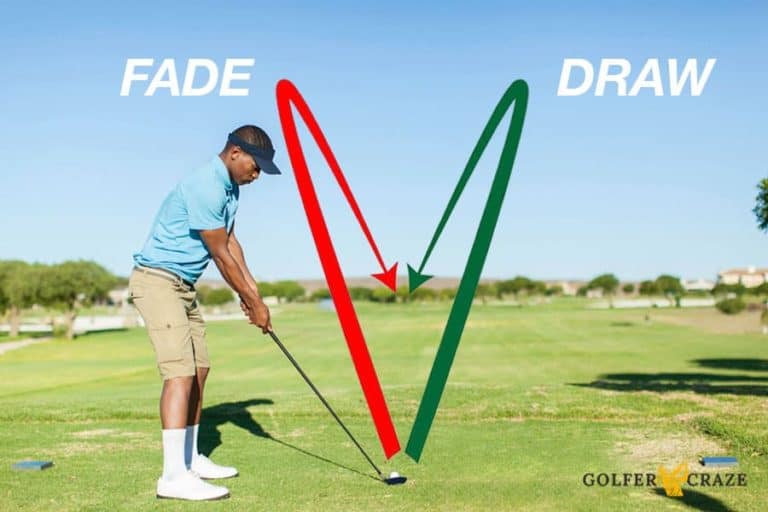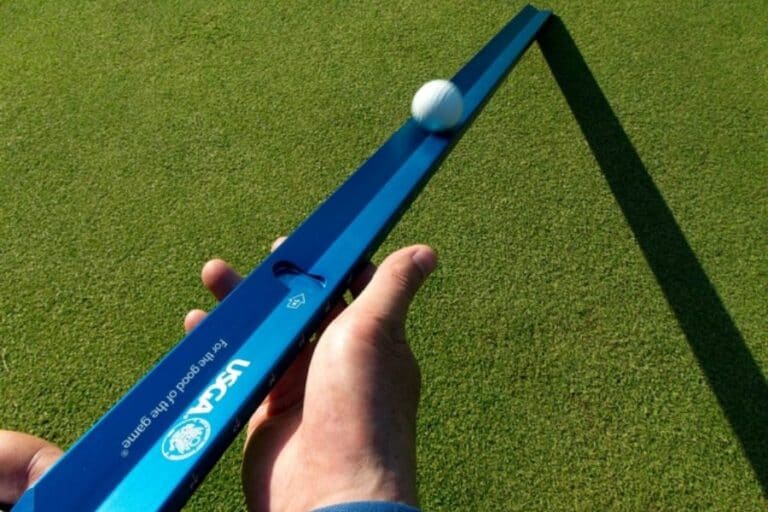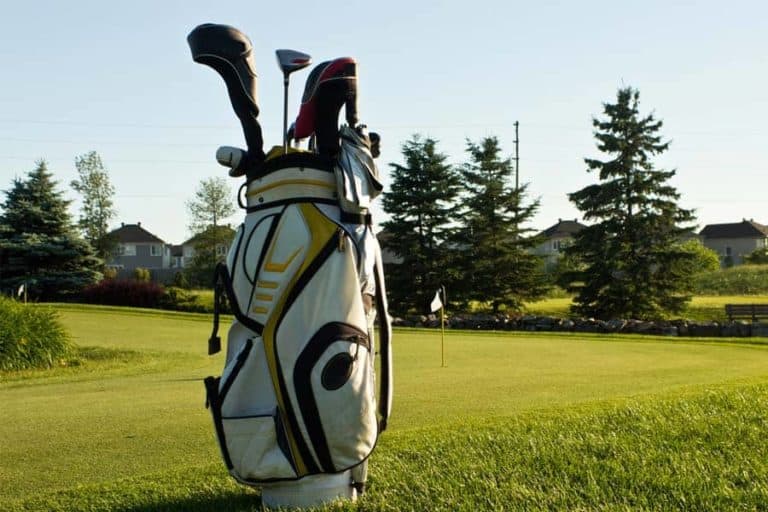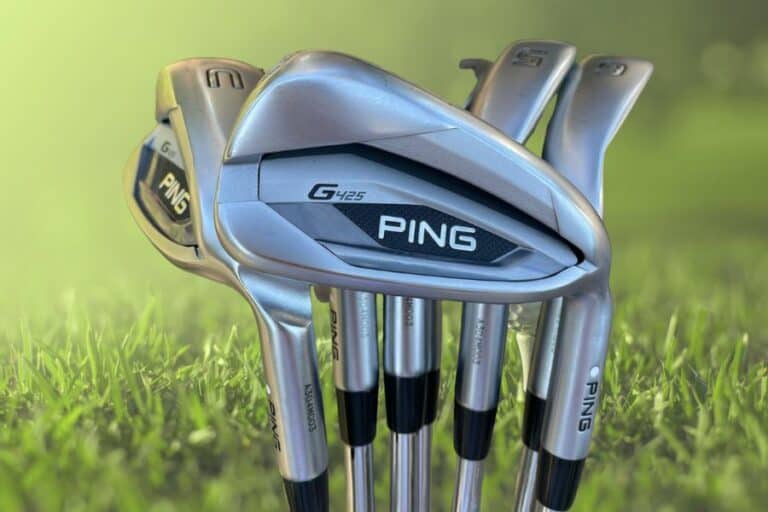What Loft Should My Driver Be? How Do I Make A Choice?
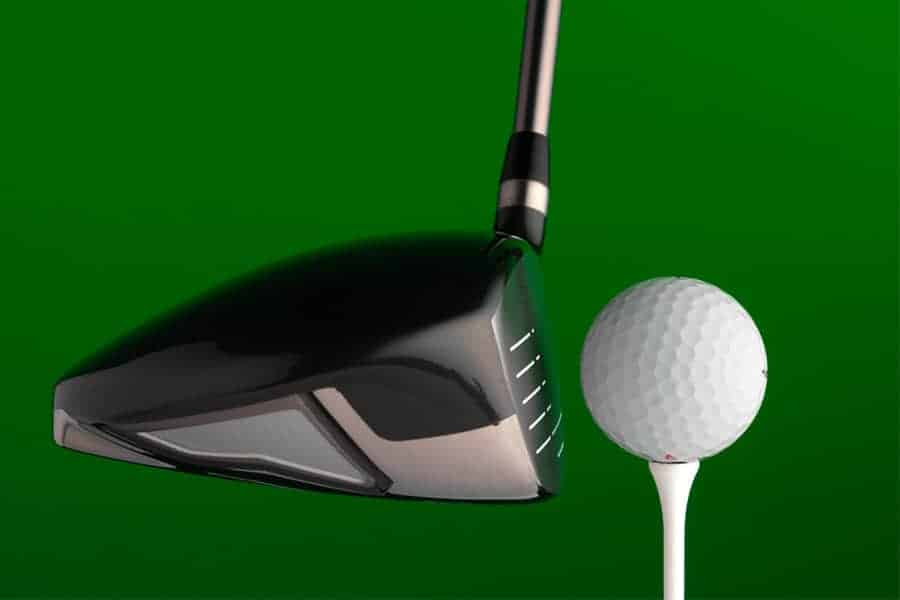
Finding the perfect driver loft that suits your swing speed and attack angle is key to improving your game. Here are some tips on what loft your driver should be!
The loft of a driver refers to the angle of its head relative to the shaft and affects how high or low you hit your shots.
This article provides complete details of loft degrees and tips for choosing the appropriate loft.
What loft should my driver be?
The two most popular driver options are 9 and 10.5 degrees.
The best driver loft for you will depend on a few factors, including your swing speed, launch angles, swing weight, and current skill level (handicap).
As a recreational golfer with an ordinary swing speed, you will likely get superior results from using a 10.5-degree driver.
The average distance won’t be much different between the above-mentioned degrees. However, the 10.5-degree loft is more forgiving and hits far more fairways than clubs with lesser loft.
Generally speaking, golfers with a slower swing speed should opt for a higher lofted driver. This will maximize their distance off the tee and reduce the amount of spin they produce.
On the other hand, players with faster swings should use a lower lofted driver for more control and accuracy.
Below is the driver loft swing speed chart for a better understanding:
- Driver loft 8.5 degrees : > 105 recommended swing speed
- Driver loft 9 degrees: 97-104 recommended swing speed
- Driver loft 10.5 degrees: 84-96 recommended swing speed
- Driver loft 12 degrees: 72-83 recommended swing speed
- Driver loft 14 degrees: < 72 recommended swing speed
It is important to keep in mind that your clubhead speed is the most important factor when deciding on a driver loft.
If you’re unsure of your swing speed, consider booking a lesson with a PGA Professional or using launch monitor technology to determine it accurately.
Importance of driver loft
Using the correct loft is important because it can affect the distance and trajectory of your drives.
Understanding what loft driver is suitable for your style can help you play golf better, especially when driving the golf balls off the tee.
When you use the wrong driver loft, your game can be adversely affected by wayward shots, unsatisfactory launch, and inconsistent trajectory paths (ball flights).
Choosing the right loft
Here are some factors that you must consider before choosing your driver loft:
1. Golf handicaps
It is easier to hit a driver accurately when the loft is higher. Thus, if your golf handicap is higher, a golf driver with a higher loft would likely give you optimum results.
2. Swing weight/ Club weight
Getting the ball in the air is tough with a heavy golf club. Thus, a 12-degree driver, which is lightweight, can knock down the ball flight quite a bit.
3. Swing Speed (club head speed)
If you have a fast swing speed, you would need a stiffer golf shaft. On the contrary, players who struggle to get distance likely have a slower swing and need a more flexible golf shaft.
For most golfers, selecting a 10.5-degree driver ensures they achieve both accuracy and distance in their shots.
On the other hand, it is easier to launch the golf ball with a higher swing speed. Thus, golfers with faster swing speeds will benefit from a 9.5-degree driver.
Who is a high-lofted driver suitable for?
Given below are some categories of golfers that should use a higher lofted driver:
Slow swingers
Slow swingers will benefit from a higher lofted driver as they can get the ball in the air easier and with less spin, leading to longer shots.
High handicappers
High handicappers should opt for a higher lofted driver, which is more forgiving and will help them hit straighter shots off the tee.
Upward hitters
Golfers that tend to hit upwards, i.e., golfers with a positive attack angle, should opt for high-loft drivers. This makes the ball spin a little less as the spin loft is lower.
Consequently, this allows them to have slightly more loft and maximum distance.
Moreover, an upwards attack angle will also launch the golf ball higher anyway.
Golfers using low and front-weighted drivers
Golfers using low and front-weighted drivers will benefit from a higher lofted driver as it gives them maximum distance. This is because drivers with a low and forward center of gravity usually generate less spin.
Thus, a higher launch angle is created using a higher loft. This will help them to get greater accuracy on their tee shots.
Who is a lower lofted driver suitable for?
Given below are some categories of golfers that should use a lower lofted driver:
Fast swingers
Fast swingers should opt for a lower lofted driver as it helps them to generate more spin and launch the ball higher, leading to maximum distance and accuracy.
Moreover, the ball speed is enough to cover the distance on the optimum trajectory.
Low handicappers
Better players need a low lofted driver as it will allow them to shape the shots better due to less spin generated. This is because lower handicappers are more consistent and can use the spin loft to their advantage.
Downward hitters
Golfers that tend to hit downward have a high spin loft. Thus using a lower lofted driver will help you reduce the backspin and will help you with more distance.
To ensure optimal results, it is important to maintain a launch angle of at least 11 degrees.
Golfers using high and back-weighted drivers
Drivers that have a back center of gravity tend to have a higher launch and higher spin. Therefore, they do not require a high loft to keep the ball airborne.
Quick glance table: High lofted vs Low lofted drivers
| High Lofted Drivers | Low Lofted Drivers |
| Slow Swingers | Fast Swingers |
| High Handicappers | Low Handicappers |
| Upward hitters | Downward hitters |
| Golfers using Low and Front-Weighted Drivers | Golfers using High and Rear-Weighted Drivers |
What Is The Best Loft For Driver Distance?
The average distance won’t be much different between the above-mentioned degrees. However, while playing on the golf course, a 10.5-degree loft is more forgiving and hits far more fairways than golf clubs with lesser loft.
Is A 9 Or 10.5 Degree Driver Better?
Generally, higher lofted drivers produce a higher ball flight and more backspin, which can lead to more distance and improved accuracy for golfers with slower swing speeds. Thus, golfers with slower swing speed might benefit from a 10.5 degree driver.
However, for players with faster swing speeds, a lower lofted driver may provide more control and distance. This makes a 9 degree loft better suited to golfers with faster swing speeds.
Does higher loft reduce slice?
Higher loft can help reduce slice for golfers who have a tendency to hit the ball with sidespin. A higher lofted driver can produce more backspin, which counteracts the slice spin and can result in a straighter ball flight.
Lofts between 10° to 12° are typically recommended for golfers looking to reduce slice. These lofts provide a good balance between backspin and ball speed, which can help neutralize the sidespin and result in a straighter ball flight.
However, it is important to note that a higher loft alone is not a cure for a slice, and other factors such as swing mechanics and clubface control play a crucial role in improving ball flight.
What angle driver goes the farthest?
The angle at which a driver goes the farthest depends on a golfer’s swing speed, spin rate, and other factors. Generally, drivers with a lower loft (7° to 9°) tend to produce the most distance for golfers with fast swing speeds, while higher lofted drivers (10° to 12°) are better suited for golfers with slower swing speeds.
Do any pros use a 10.5 degree driver?
But there are obviously a lot of pro golfers who would play this. In fact, many pros do play 10.5 drivers, even on the PGA Tour. Nick Watney, Camillo, Jim Furyk, Dustin Johnson, are some examples of pros who have used 10.5 drivers. Others like Tiger Woods, use less loft on their drivers.
What loft is Tiger Woods driver?
Tiger Woods uses a TaylorMade Stealth Plus driver with a 9° loft and a X-stiff flex shaft. The driver is designed for maximum distance and accuracy.
Woods uses a 9° loft driver because it provides him with a lower ball flight, which reduces spin and increases control, especially on tee shots.
Additionally, with Woods’ exceptional swing speed, the 9° loft allows him to maximize distance while still maintaining accuracy.
Tips on choosing a loft for your driver
- Invest in a professional fitting session to determine the loft and shaft that suits you.
- Check swing speed and attack angle when selecting the driver loft.
- Consider the weight of your point club as well as the center of gravity when deciding on the right degree of loft.
- Invest in an adjustable loft driver to help you find the right loft and trajectory for your shots.
Conclusion
Finding the correct driver loft can help you improve your game and ultimately lead to lower scores. If you have questions about what driver loft is best for you, it’s always a good idea to visit a PGA Professional or use launch monitor technology. This will help ensure that your driver is the correct one for your game.



